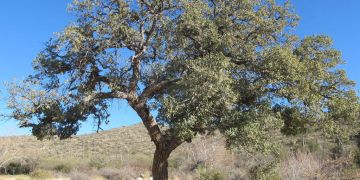White Oak Habitat
This fine tree is native to the eastern part of North America and can be very impressive in terms of both appearance and longevity. It will grow fairly tall inside a forest, but when in the open it spreads horizontally rather than attaining height. Specimens have been known to reach an age of 450 years or more. Despite its name, the bark is usually light gray rather than white, and it is in the bark that its many beneficial herbal qualities can be found.
White Oak Health Benefits
White oak has a long history of usage for a variety of health conditions. It was listed in the United States Pharmacopoeia up to 1916 for its astringent and antiseptic properties. It is approved as a diarrhea treatment by the German Commission E, and it is on the GRAS (Generally Recognized as Safe) list for both topical and oral applications.
It was being used by Native Americans as a remedy for many conditions. These benefits include acting as an astringent, antiseptic and an anti-inflammatory. North American settlers in turn learned from the Native Americans how to use the herb to treat illnesses, wounds and other physical problems. In addition to the bark, the acorns of the tree have been used as food and also to make a tea or coffee substitute which had the added benefit of controlling bowel problems.
The astringent action of white oak is due to the high levels of tannins found in the bark. An astringent works by shrinking or constricting the tissues of the body, both internally and externally. This is good for treating internal bleeding and diarrhea as well as external bleeding, hemorrhoids, varicose veins and other skin conditions such as burns, abrasions and eczema. Anti-inflammatory properties of this herbal supplement are related to its actions as an astringent and an antiseptic.
As an antiseptic, white oak can control infections inside and outside the body due again to the action of the tannins. These bind with proteins in the tissues of the body and thus keep out harmful bacteria. Bladder infections, venereal diseases, vaginal infections and dysentery have been known to improve with the use of white oak in the form of a tincture or tea, as well as in capsules of the powdered bark. On the surface of the body, skin infections may be helped by adding the bark to bath water or by applying an infusion or extract to the problem area.
Some other beneficial qualities of white oak include its action as a diuretic, which can improve bladder health and help get rid of kidney stones and gallstones. There has also been found to be an anthelmintic quality to this herb. This makes it effective against parasitic worms such as pinworms which can invade the intestinal tract. In the treatment of upper respiratory infections, due to the saponins it contains, it can act as an expectorant to help get rid of phlegm and mucous.
Daily Dosage
When taken internally, the recommended daily dosage of the powdered bark in capsules is approximately one gram, and preferably it should be taken with food. In the form of extracts, the dosage varies with the strength of the product, but typically is in the range of 30-60 drops diluted in water and taken 2-3 times daily. Applied topically or externally, it may be used as needed.
White oak truly is a multi-purpose supplement with a long history of utilization by different people.





